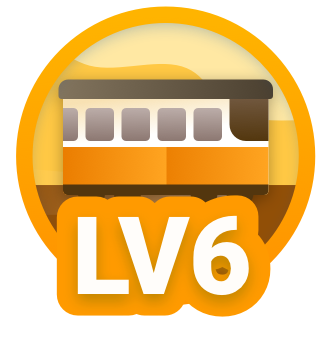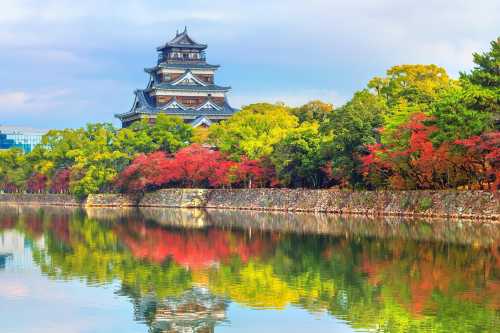Popular Trip Moments
Onomichi City Seaside Photo Spot | THE KNOT HIROSHIMA | 🌿 Shukkeien Garden — Hiroshima’s Pocket-Sized Paradise | 🏨 Mitsui Garden Hotel Hiroshima — Comfort with a City View | 🎨 Hiroshima Museum of Art — A Tranquil Sanctuary of Beauty and Peace | 🖼️ Hiroshima Prefectural Art Museum — Where Culture and Nature Converge | 🚆 Numaji Transportation Museum — A Journey Through Movement and Imagination | 🏯 Hiroshima Castle — The Carp Castle of Resilience and Heritage | 🌅 Grand Prince Hotel Hiroshima — Seaside Elegance with Panoramic Tranquility | 🍽️ Nagataya — The Soul of Hiroshima’s Okonomiyaki Tradition | 🧩 5-Days Children’s Cultural Science Museum — Where Curiosity Comes Alive | 🕊️ Honkawa Elementary School Peace Museum — A Classroom That Remembered | Sorasaya Inao Shrine. | Experience history and a moment of prayer at the Peace Memorial Park | Exploring Hiroshima's cityscape by streetcar | Experience the enchanting sacred sea domain at Itsukushima Shrine on Miyajima | Explore the history and charm of the castle town at Hiroshima Castle | Experience the beauty and tranquility of a Japanese garden at Shukkeien | Hiroshima Cityscape and Sunset Viewed from Hijiyama Park | TOSHOGU SHRINE. | Walking Through Hiroshima, a Time of Peace | Hiroshima|A Short Trip to Okunoshima Island to Get Up Close with Adorable Rabbits | Hiroshima's rebirth after the devastating atomic bomb attack | HIROSHIMA CASTLE. | SHUKKEIEN GARDEN. | A COOL SPOT FOR BREAKFAST IN HIROSHIMA. | Atomic Bomb Dome (Genbaku Dome) | [Onomichi] A stylish cafe surrounded by greenery on top of a hill✨️ | 🌅Hiroshima and Miyajima 2-day, 1-night girls' trip | 🇯🇵【Hiroshima Prefecture】Intergate Hiroshima offers the best free services!
Recommended Attractions at Popular Destinations
Popular Attractions in Sydney | Popular Attractions in Dubai | Popular Attractions in Paris | Popular Attractions in Shanghai | Popular Attractions in Phuket | Popular Attractions in New York | Popular Attractions in Tokyo | Popular Attractions in Bali | Popular Attractions in Melbourne | Popular Attractions in West Lake | Popular Attractions in Iguazu National Park(Argentina) | Popular Attractions in London | Popular Attractions in Rome | Popular Attractions in Kuala Lumpur | Popular Attractions in Chefchaouene | Popular Attractions in Singapore | Popular Attractions in Kyoto | Popular Attractions in Los Angeles | Popular Attractions in Zanzibar Island | Popular Attractions in Las Vegas | Popular Attractions in Osaka | Popular Attractions in Walt Disney World Resort | Popular Attractions in Beijing | Popular Attractions in Bangkok | Popular Attractions in Barcelona | Popular Attractions in Chengdu | Popular Attractions in Florence | Popular Attractions in Madrid | Popular Attractions in Jungfrau Region | Popular Attractions in Istanbul
Popular Attractions
Yechun Garden | Jiaoshan Mountain | Zhanqiao Park | Little Qingdao | Lu Xun Park | A Bamboo-Lined Path Yunqi | Quyuanfenghe (Breeze-Rustled Lotus In Quyuan Garden) | Huashilou House | LaoLong Jing Yu ChaYuan | Dai Temple | Wushan Tianfeng Scenic Area | Melaka Sultanate Palace Museum | National Park of Hainan Tropical Rainforest | Christ Church Melaka | Xian'an Stone Forest | Zhuhai Fisherwoman | Museo Civico di Paleontologia e Paletnologia Decio | Nurettin Esin Parki | BoerenRustPunt | Tata motors garden | Vinnytsia Planetarium | Zamhuri House | Copan Point | Centre Aquatique Sainte Victoire | Verkehrtes Hexenhaus - Hexenweg | Taman Sarung Allo | Eighteen Twistings | Leifeng Tower | Nanping Evening Bell | Viewing Fish at Flower Harbor
Popular Restaurants in Hiroshima
Ishimatsusandaime | Otis! | Riva | La fontana | SUZU CAFE Hiroshimaparuko | Seajack Takeyachoten | Yakiniku Yanagiya | Tomiya Honkan | Izakaya Bocco | Ogoshiya | Tsukiakari | Gyozaya Ryu Komachiten | Tokugawa Sohonten | Gyozaya Ryu Hatchoboriten | Okonomiyaki Nagata-ya | Reichan | Chinese Dining "Koh-Ran-En" | Seasonal Cuisine Nakashima | Im Aroi | Sakenosakana | Nazukeoya Nakamachihonten | Mirakutei | Jidoritei Tatemachiten | Hiroshima 2016 Restaurant Under the Sky | Hiroto | Yakiniku Jango | 玉の | Shikiya | Cat Cafe "Manekineko" | Aloft Boulanger cafe
Popular Ranked Lists
Popular Premium Hotels in Vila do Bispo | Top 50 Luxury Hotels near Morris County | Popular Premium Hotels in Shodoshima | Top 20 Luxury Hotels near Osceola County | Top 10 Trending Attractions in Qingdao | Top 10 Luxury Hotels near Arapahoe County | Popular Trending Attractions in Tekes | Top 10 Trending Attractions in Yangzhou | Top 10 Trending Attractions in Dubai | Top 50 Must-Visit Restaurants in Qingdao | Top 10 Trending Attractions in Tokyo | Top 10 Trending Attractions in Nanning | Popular Trending Attractions in Putian | Popular Premium Hotels in Ahmednagar | Top 20 Luxury Hotels near Indian River County | Popular Luxury Hotels Near Horry County | Popular Premium Hotels in Sumur Bandung | Popular Trending Attractions in Dunhuang | Top 50 Trending Attractions in Shanghai | Popular Trending Attractions in Ningbo | Top 10 Trending Attractions in Taiyuan | Top 20 Must-Visit Restaurants in Changchun | Popular Trending Attractions in Guiyang | Top 50 Luxury Hotels near Hartford | Popular Luxury Hotels in Bouches-du-Rhone | Top 20 Must-Visit Restaurants in Pattaya | Popular Trending Attractions in Hefei | Top 20 Must-Visit Restaurants in Guilin | Popular Trending Attractions in Yichang | Popular Premium Hotels in Courbevoie
About
Payment methods
Our partners
Copyright © 2025 Trip.com Travel Singapore Pte. Ltd. All rights reserved
Site Operator: Trip.com Travel Singapore Pte. Ltd.
Site Operator: Trip.com Travel Singapore Pte. Ltd.











































